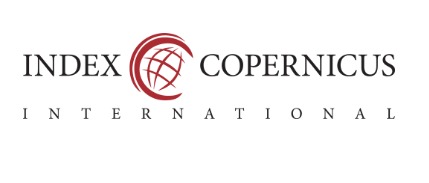Network governance of haze in Shenyang
Abstract
Aim: This paper uses the framework of network governance theory to investigate the extent to which Shenyang’s governors and the city’s citizens and businesses work together to combat the haze problem. This paper will illustrate the roles of various collaborative subjects to describe each subject’s individual and shared responsibilities in haze governance.
Methodology: The researchers used a qualitative approach, gathering information from a comprehensive review of the relevant literature.
Findings: The main result of this effort is a request to the government of Shenyang for their perspective on what can be accomplished through network governance in environmental governance. Network governance’s strengths lie in its ability to bring air pollution issues to the forefront of the political agenda and its potential to create and nurture sustainable development through cooperation between public and private actors at the differentiated regional levels.
Implications: In this article, we apply the principles of network governance to the problem of haze weather, which in turn informs a new approach to environmental administration. Unlike top-down and bottom-up approaches, network governance encourages public participation and boos
References
Bogason, P., and Musso, J. A. 2006. “The Democratic Prospects of Network Governance.” The American Review of Public Administration 36(1): 134-140.
Cohen, A. J., Ross Anderson, H., Ostro, B., Pandey, K. D., Krzyzanowski, M., KÃijnzli, N., Gutschmidt, K., Pope, A., Romieu, I., Samet, J. M., and Smith, K. 2005. “The Global Burden of Disease Due to Outdoor Air Pollution.” Journal of Toxicology and Environmental Health 68(13-14): 1301-1307.
Eberhard, R., Margerum, R., Vella, K., Mayere, S., and Taylor, B. 2017. “The Practice of Water Policy Governance Networks: An International Comparative Case Study Analysis.” Society & Natural Resources 30(4): 453-470.
Hu, F. Y., Xi, J., Guo, J., Yu, L. H., Liu, L., He, X. H., Liu, Z. L., Zou, X. Y., and Xu, Y. M. 2010. “Association of the Glucocerebrosidase N370S Allele with ParkinsonâA ̆ Zs Disease in Two Separate Chinese Han Populations of Mainland China.” European Journal of Neurology 17(12): 1476-1478.
Khan, J. 2013. “What Role for Network Governance in Urban Low Carbon Transitions?” Journal of Cleaner Production 50: 133-139.
Koimann, J. 2003. Governing as Governance. London, UK: Sage Publications.
Liu, S. Y., and Zhu, D. M. 2015. “Study on System Construction and Evaluation of Citizen Participation in Chinese Public Policy Decision.” Chinese Public Administration 06: 101-106.
Pierre, J., and Peters, G. 2000. Governance, Politics and the State. New York, NY: St. MartinâA ̆ Zs Press. ́
Piore, M., and Sabel, C. 1984. The Second Industrial Divide. New York, NY: Basic Books.
Powell, W. W. 1992. “Competitive Cooperation in Biotechnology: Learning Through Networks?” In Networks and Organizations: Structure, Form, and Action, edited by N. Nohria. Brighton, MA: Harvard Business School Press.
Qi S. Q., Zhang, F. F., Wan, L. H., and Zhang, D. Y. 2016. “Study on Identification and Extraction of Straw Burning Area in Autumn Haze Period in Harbin.” Journal of Natural Disasters 25(04): 152-158.
Ring, P. S., and Van de Ven, A. H. 1992. “Structuring Cooperative Relationships Between Organizations.” Strategic Management Journal 13(7): 483-498.
Sharma , P., Galhotra, R., Jain, P., Goel, P. A., Aggarwal, B., Narula, D., Singh, C., Dugar, J., Goyal, M., Sanghi, P., Pragati, Gupta, S. 2017. “Health Benefits Derived by Reducing Air Pollution: An East Delhi Analysis.”Journal of Advances in Humanities and Social Sciences 3(3): 164-181.
Shenyang Statistical Bureau. 2017. “Statistical CommuniquÃl’ of Shenyang on the 2016 Domestic Economic and Social Development.” Liaoning Statistical Bureau, Retrieved May 22, 2016 (http://goo.gl/wCBxgN).
Snow, C. C., Miles, R. E., and Coleman Jr, H. J. 1992. “Managing 21st Century Network Organizations.” Organizational Dynamics 20(3): 5-20.
SÃÿrensen, E. 2002. “Democratic Theory and Network Governance.” Administrative Theory & Praxis 24(4): 693- 720.
SÃÿrensen, E. 2005. “The Democratic Problems and Potentials of Network Governance.” European Political Science 4(3): 348-357.
SÃÿrensen, E., and Torfing, J. 2009. “Making Governance Networks Effective and Democratic through Metagovernance.” Public Administration 87(2): 234-258.
Xudong, Z., Hongwu, Y., and Yunhai, Z. 2015. “Changes of Meteorological Factors in Shenyang City during 1951-2012 and Its Relationship with Air Pollution.” Ecology and Environmental Science 24(1): 76-83.
Yu, B. 2013. “Study on Stalks Energy Utilization in Liaoning Province.” Chinese Academy of Agricultural Sciences, Retrieved August 22, 2016 (http://goo.gl/LVCAjP).
Zhang, L., Han, G. C., Chen, H., Ma, M. G., and Guo, H. D. 2008. “Study on Heavy Metal Contaminants in Soil Come from Coal Mining Spoil in the Loess Plateau.” Journal of China Coal Society 10: 1-13.

This work is licensed under a Creative Commons Attribution-NonCommercial 4.0 International License.












.png)










